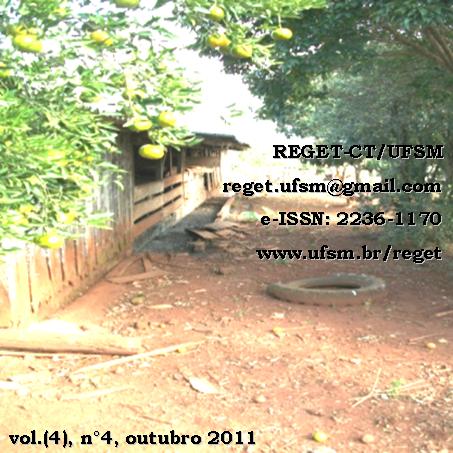A URBANIZAÇÃO DE CAXIAS DO SUL COMO PROCESSO TRANSFORMADOR DOS PATRIMÔNIOS NATURAIS DA REGIÃO
DOI:
https://doi.org/10.5902/223611703888Keywords:
Caxias do Sul, environmental education, development, urbanization.Abstract
Located at the northeast of the Rio Grande do Sul state in Brazil, Caxias do Sul is considered oneof the most social-economically developed city of the state, suggesting the union of an organizedindustrial development and a structured social and environmental awareness. The city in questionarose through the work of Italian immigrants, come in search of a better place to live, these wereresponsible for the expansion of agriculture and the construction of roads and railways, bringingdevelopment to the Southern Brazilian mountains. Past 119 years after it's emancipation, Caxiasdo Sul became an industrialized and urbanized local, without losing it's most striking features, likethe abundance of preserved native forests areas, the appearance of small-town, clean andorganized and traces of Italian immigrants present in it's architecture and customs. This studyaimed to identify major changes in the environment that occurred during the urban developmentprocess in Caxias do Sul, highlighting the main environmental impacts from this process, as thegrowing production of waste, deforestation, air pollution and water resources, demonstrating theenvironmental education activities performed in the city through the various ecologicalprojects developed by the State Government. Data were obtained through field research and photographic records, indicating changes in the region scenery
Downloads
References
BRANCO, S.M. O Meio Ambiente em Debate. 26.ed. São Paulo: Moderna, 1997.
COMPANHIA DE DESENVOLVIMENTO DE CAXIAS DO SUL. CODECA – Companhia de Desenvolvimento de Caxias Do Sul. Caxias do Sul, 2009. Disponível em: <http://www.codeca.com.br>. Acesso em: 19 set. 2009.
DIEHL, A.A.; TATIM, D.C. Pesquisa em Ciências Sociais Aplicadas: Métodos e Técnicas. São Paulo: Pearson Prentice Hall, 2004.
FERRETTI, E.R. Turismo e Meio Ambiente. São Paulo: Roca, 2002.
GUERRA, A.J.T.; MARÇAL, M.S. Geomorfologia Ambiental. Rio de Janeiro: Bertrand Brasil, 2006.
HERÉDIA, V.B.M. Processo de Industrialização da Zona Colonial Italiana. Caxias do Sul: EDUCS, 1997.
HERÉDIA, V.B.M. Câmara de Indústrias, Comércio e Serviços de Caxias do Sul. Caxias do Sul: Maneco, 2001.
HERÉDIA, V.B.M.; MACHADO, M.A. A Formação de Núcleos Urbanos na Região de Colonização Italiana no Rio Grande do Sul . Scripta Nova, Barcelona, 01 ago. 2003. Disponível em:
<http://www.ub.es/geocrit/sn/sn-146(065).htm>.Acesso em: 10 set. 2009.
INSTITUTO BRASILEIRO DE GEOGRAFIA E ESTATÍSTICA. IBGE. Instituto Brasileiro de Geografia e Estatística, 2009. Disponível em: <http://www.ibge.gov.br>. Acesso em: 15 set. 2009.
MARCONE, M.A.; LAKATUS, E.M. Técnicas de Pesquisa: Planejamento e Execução de Pesquisas, Amostragens e Técnicas de Pesquisas, Elaboração, Análise e Interpretação de Dados. 2.ed. São Paulo: Atlas, 1990.
MILLER, G.T. Ciência Ambiental. 11.ed. São Paulo: Thomson, 2007. MOLINA, S.E. Turismo e Ecologia. Bauru, SP: Edusc, 2001.
NASCIMENTO, R.R.F.; Campo dos Bugres-Sede Dante: a formação urbana de Caxias do Sul. 2009. 117 f. Dissertação (Mestrado em História) - Pontifícia Universidade Católica do Rio Grande do Sul, Porto Alegre, 2009.
PREFEITURA MUNICIPAL DE CAXIAS DO SUL. Caxias do Sul, 2009. Disponível em: <http://www.caxias.rs.gov.br>. Acesso em: 15 set. 2009.
SERVIÇO AUTÔNOMO MUNICIPAL DE ÁGUA E ESGOTO. SAMAE – Serviço Autônomo Municipal de Água e Esgoto. Caxias do Sul, 2009. Disponível em: <http://www.samae.com.br>. Acesso em: 19 set. 2009.





